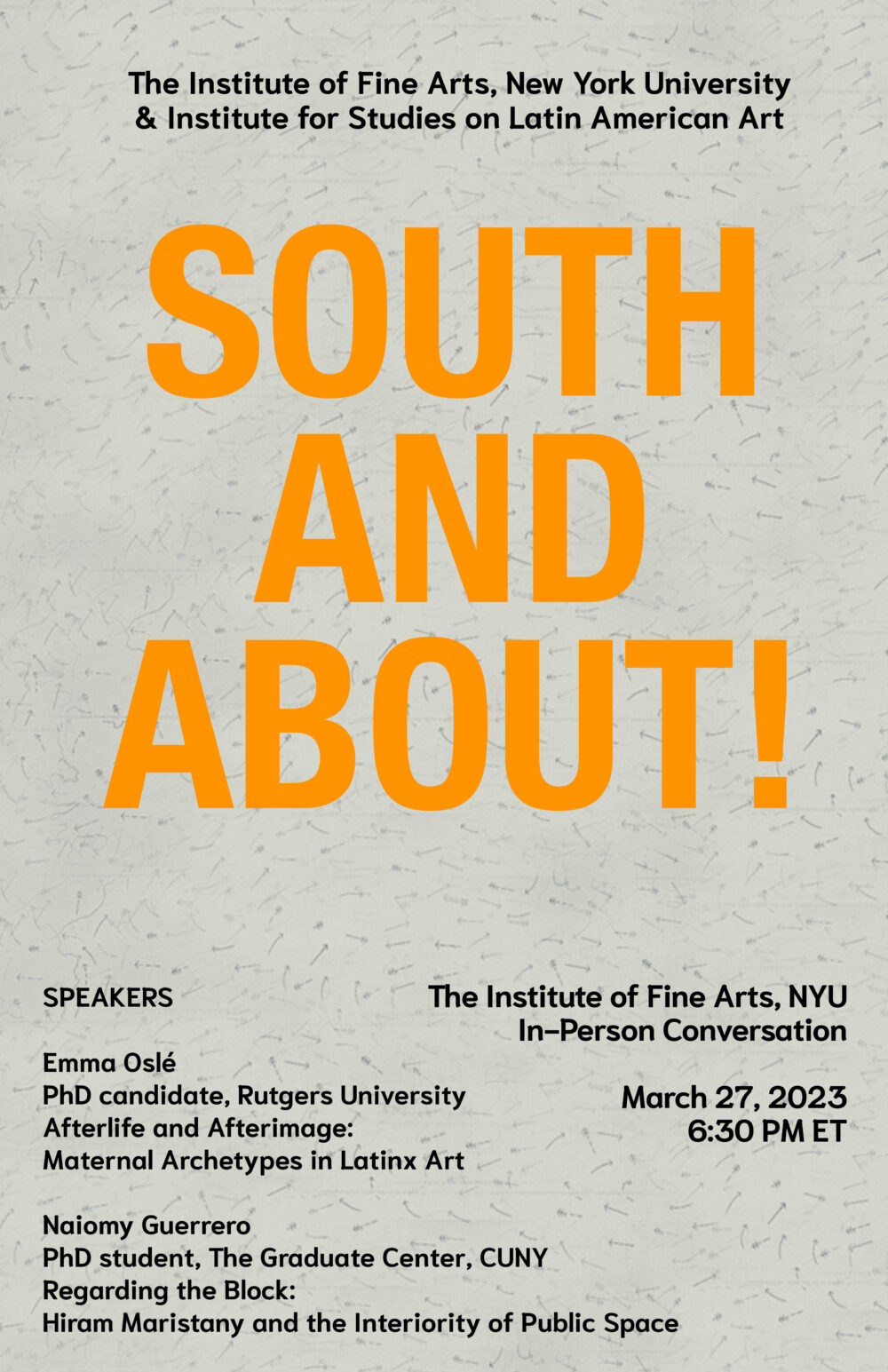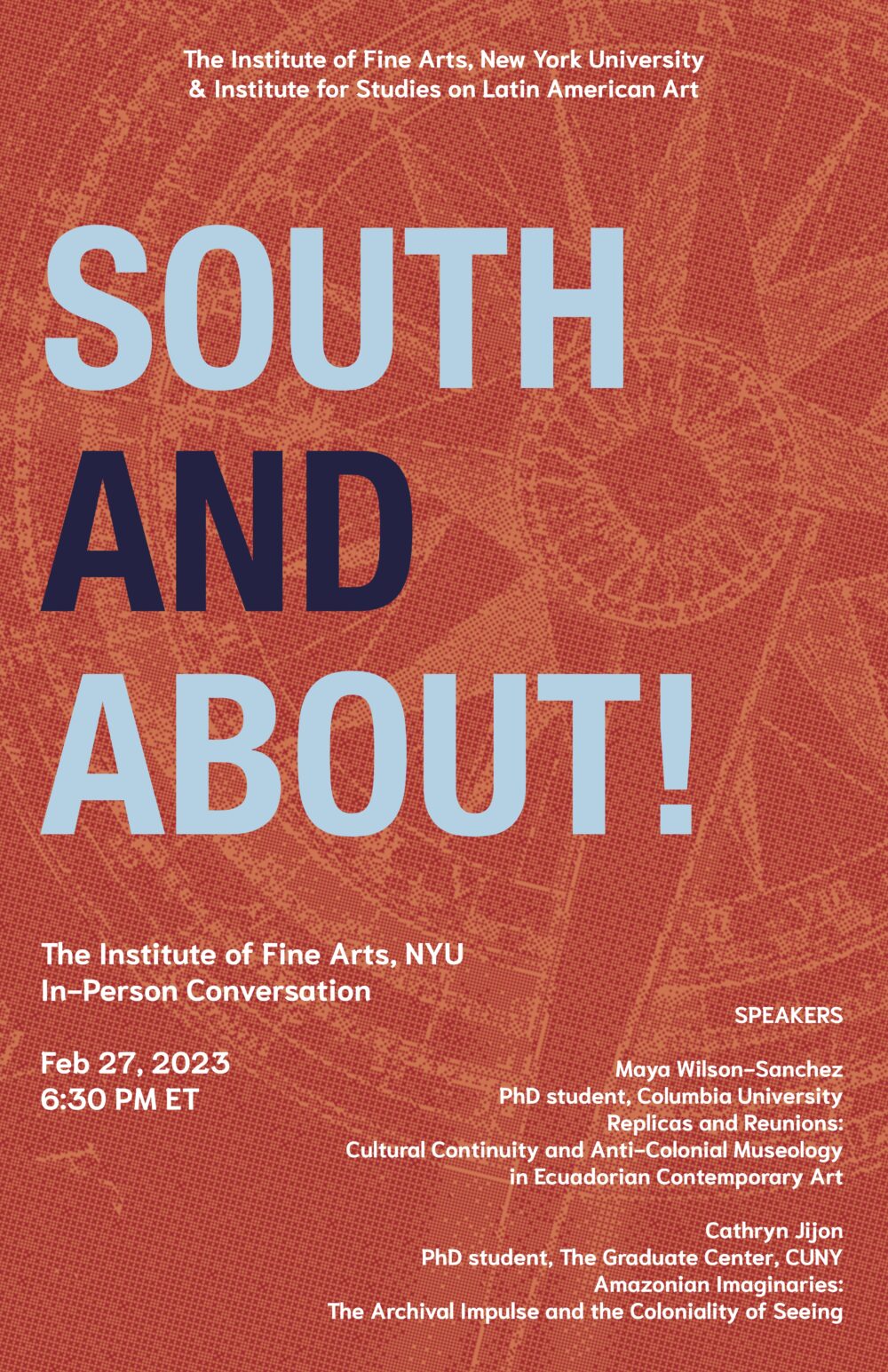South and About! Spring 2023
March 27
South & About! is a student-organized research workshop on the arts from Latin America and the Caribbean. This program invites graduate students and emerging scholars in art history and related disciplines to participate in informal discussions amongst their peers.
Afterlife and Afterimage: Maternal Archetypes in Latinx Art
Emma Oslé, PhD candidate, Rutgers University
In 2017, Wanda Raimundi-Ortiz (b. 1973) staged a performance departing from Michelangelo’s Pieta sculpture in the Vatican. In it, Raimundi-Ortiz re-envisioned herself as a 21st-century Virgin Mary, dressed in velvet robes and a heavily embellished headdress. With the sounds of a live gospel choir echoing around her, Raimundi-Ortiz spent the performance holding a series of audience participants in a maternal embrace of grief and mourning. Filtered through the lens of her own motherhood, this act became a visceral expression of the grief and anxieties that accompany mothering an Afro-Latino son in the current racial climate of the United States.
In this paper, I present a series of case studies in which artists generate contemporary responses to persistent maternal archetypal figures that hold sociocultural importance throughout the Americas, like Raimundi-Ortiz’s Pieta. These figuers are wide-ranging and include “Las Tres Madres”—La Malinche, La Llorona, and La Virgen de Guadalupe—from Mexican and Chicanx traditions; trans-Atlantic African syncretic deities Oshún and Yemoja; and Mesoamerican deities Ixchel, Coyolxauhqui and Xōchiquetzal, among others. I will bring together artists such as Harmonia Rosales (b. 1984) and Yelaine Rodriguez (b. 1990) to consider a few of the myriad ways archetypal mothers are imagined, interpreted, and reconsidered. These artists utilize diverse perspectives of mourning, intergenerational trauma, gender equality, and racial violence to elucidate the effects of maternal care that ripple throughout the hemisphere.
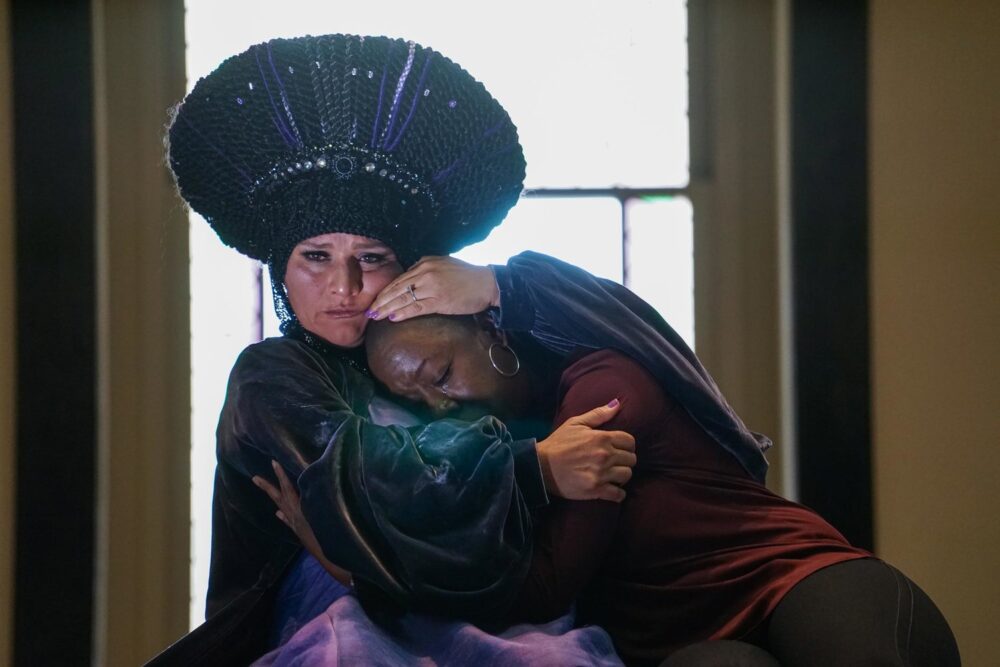
Regarding the Block: Hiram Maristany and the Interiority of Public Space
Naiomy Guerrero, PhD student, The Graduate Center, CUNY
In my presentation, “Regarding the Block: Hiram Maristany and the Interiority of Public Space,” I argue that an alternative reading of Group of Young Men on 111th street, and The Gathering, removed from moments of resisting oppression typically depicted in Maristany’s photographs, these photographs of everyday life on 111th street, focus on the interiority of these subjects revealing an insistence on rest, play, and intimacy that at its core, is most interested in an affirmation of itself. In the moments captured, the East Harlem block of 111th street is made an extension of the home, in other words, the protection and blessedness of the home spills out onto the block itself and provides Maristany, its inhabitants, and the subjects in these photographs with assurance. The block, and Maristany, as a native of the neighborhood with his camera, confer and confirm belonging; everyone involved in the photographic moment is participating in the practice of hugging the block, and we witness the block hugging back. The block, the fire escapes, the hallways, the street, and the stoop are all produced as genuine spaces of acceptance, capable of holding moments of pleasure, a quiet stability, even if fleeting, required for boredom to occur, and finally, presence. These images are not imposed. They have no relationship to the state or interest in being extraordinary examples of disruption. These images are concerned only with the confirmation of itself as a moment, a life, their subjects, their locality, and both Maristany’s and the subjects right to the city, to the block.
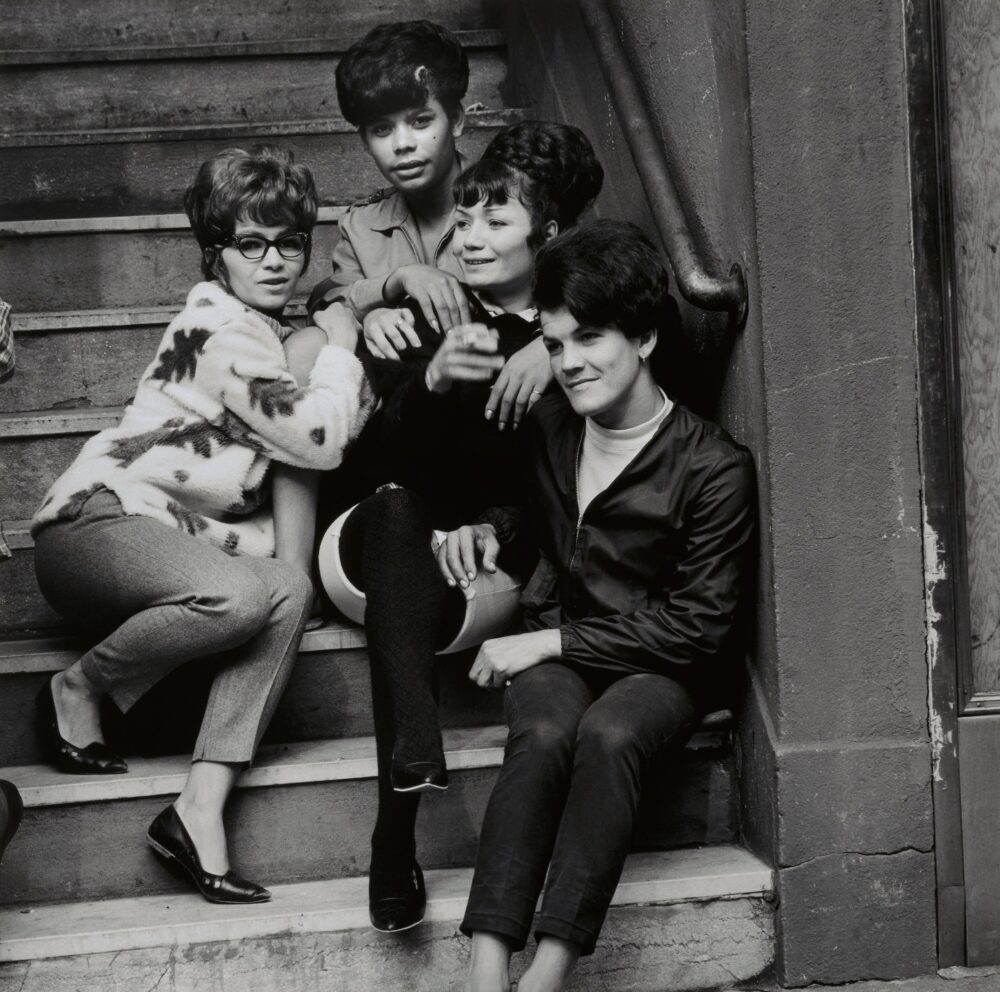
February 27
Replicas and Reunions: Cultural Continuity and Anti-Colonial Museology in Ecuadorian Contemporary Art
Maya Wilson-Sanchez, PhD student, Columbia University
The rural town of La Pila in Ecuador and its surrounding regions in the province of Manabí have been important sites for archeological excavation since at least the late 19th century. In the 1960s and 70s, some of the residents of La Pila worked to excavate ancient ceramics on their own or alongside archeologists and art dealers. As an alternative to agricultural work, many residents in La Pila became ceramists and reverse-engineered the techniques of their ancestors. Fueled by new national and international interest in collecting ancient ceramics from Latin America, these artisans started making ceramic replicas to sell to tourists and intermediaries for the art market. This research presents the work of five artisans from La Pila and their artistic collaboration with Quito-based contemporary artist Pamella Cevallos, in which eight ceramic replicas were commissioned to match with eight original pre-colonial Ecuadorian ceramics from Manabí in the collection of the Gardiner Museum. In museums, original works are given more importance than replicas. This artwork problematizes this binary and recognizes the political and ideological threat that replicas can pose to colonial systems of collecting. The research also discusses the discovery of how contemporary artisans in La Pila continue to use pre-colonial ceramic molds found in excavation sites and passed down through generations to produce their ceramics today, further problematizing the differences between pre- and post-colonial, and the original and the copy.
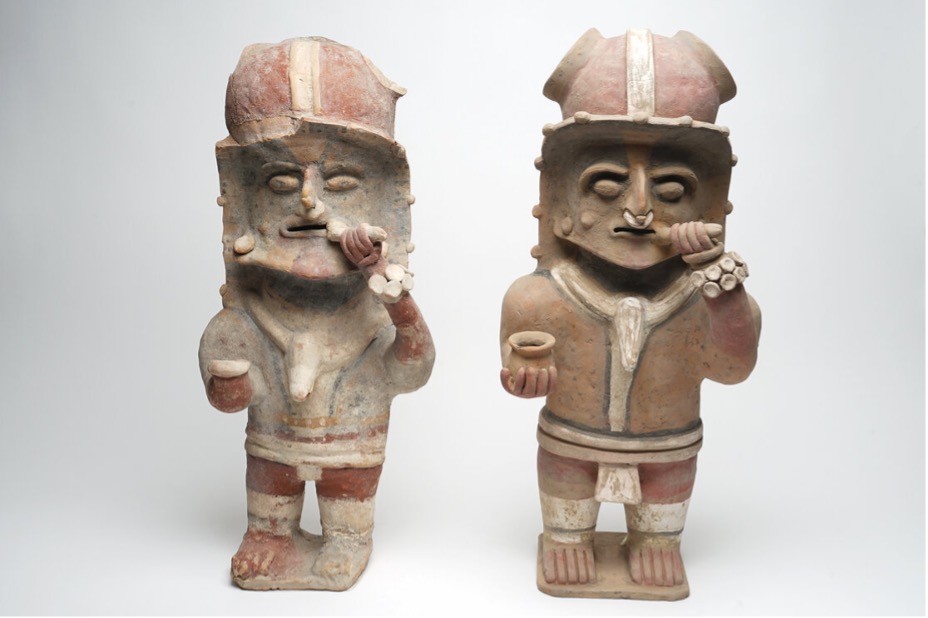
Amazonian Imaginaries: The Archival Impulse and the Coloniality of Seeing
Cathryn Jijon, PhD student, The Graduate Center, CUNY
